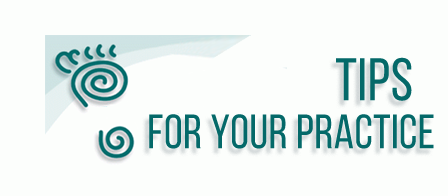
Promoting with style
When promoting reflexology, we tend to talk about the things that we ourselves think are important. One might be keen to discuss the detail such as research results and exact treatment procedure at length whilst another prefers to chat about the latest techniques they have learned and why reflexology feels so good. Neither is wrong but you might wonder why you don’t always notice that spark of interest in your listener’s eyes.
What if you could identify quickly how to frame information for each individual? Well, it is not so difficult once you are able to recognize their preferred behavioural style. This has nothing to do with personality analysis but all to do with how people’s viewpoints differ and how they like to get their needs met.
There are four basic styles of behaviour and although we generally exhibit characteristics from all four we also have a tendency to be stronger in one or two of them. They are:
Dominance (High D)
These people accept challenges and take risks. They are assertive, results orientated, decisive and like a fast pace. They are competitive and really happy when they have a sense of purpose and a goal.
Influence (High I)
These people are informal and fun loving. They are creative, often impulsive, like stimulation and variety They are unconcerned with detail, and love to be with people and at the centre of things.
Steadiness (High S)
These people are loyal, patient and enjoy helping others. They are good listeners and generally let others take the initiative. They have difficulty saying ‘no’. They need the security of knowing that something they are involved in has been around for a while.
Conscientiousness (High C)
These people are well organized, systematic and like accuracy. They are detailed and thorough and so need to evaluate all the information carefully before coming to any decision.
Can you recognize yourself? Remember we are usually a blend of all four with one or two dominating. Our main behavioural style is not fixed in concrete either and will vary . For example we might exhibit more High D characteristics at work than at home.
Now if you were to talk to a High D about having reflexology treatments, you would make it brief with just enough detail with maybe some research results to convince them they wouldn’t be wasting their time.
You could talk about the aspects that will give them the edge eg: improved concentration or sleep. You would involve them in setting goals for their health and maybe even issue a small challenge.
The High I is a completely different kettle of fish. Variety is the spice of life for them and detail is boring! Make your talk fun and show them images such as a foot chart (the High I’s in my classes always decorate their assignments and make them entertaining).
Talk to this client about all the different ways you can apply reflexology techniques and how pampering it is and how what you do is the latest thing…but whatever you do, don’t go on and on about research results and minute details of your treatment plan; especially don’t expect them to give up their cheese, wine and staying out late or ask them to fill in a daily diary!
Do something different at every session. The High I’s like to spread the word and influence others, so give them heaps of your business cards and make a special offer to get the ball rolling.
The High S may have difficulty taking time out to look after themselves, as they are focused on the needs of others. Once they realize the benefits of reflexology however, you will probably start to see the whole family for sessions.
They like to know that the therapy they choose has solid foundations and that you are well qualified. They don’t like change, so it is better to introduce different treatment approaches slowly, taking time to explain your reasoning.
The High C likes detail, so you can talk at length and in some depth about reflexology theory and research results. Give them a handout or direct them to a website so they can check it out for themselves. They will appreciate a well thought-through and detailed treatment plan.
Understanding the four styles of behaviour adds fun to your communication with clients. The most difficult part is adapting your own communication style to suit theirs! But the first step is to develop the awareness of these differences, and the rest will follow.



